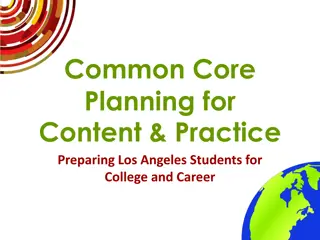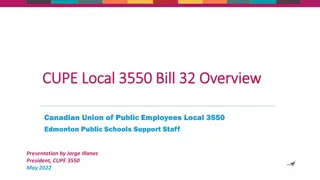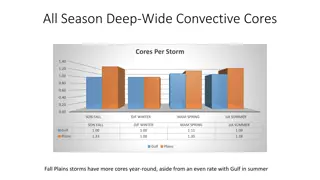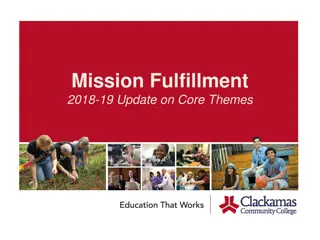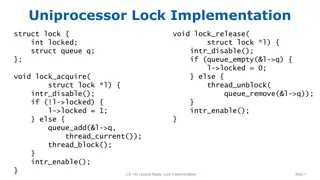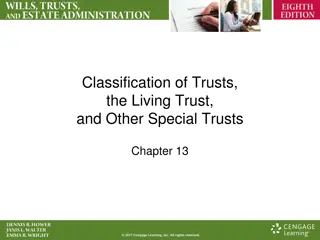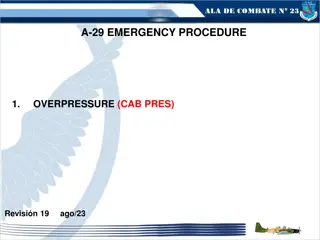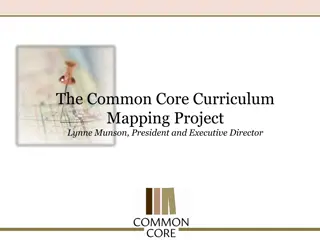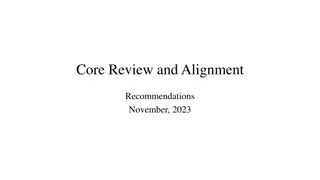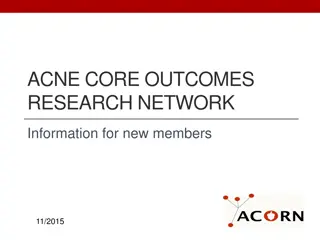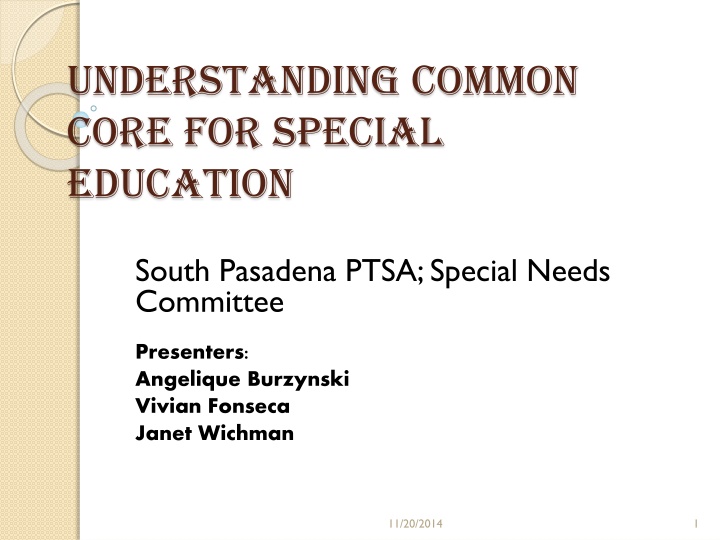
Common Core in Special Education: Key Information and Benefits
"Explore the significance of Common Core standards in special education, its impact on students, reasons for adoption, and the shift towards skill-based learning. Discover the benefits, levels affected, and future directions for implementing Common Core principles in education."
Download Presentation

Please find below an Image/Link to download the presentation.
The content on the website is provided AS IS for your information and personal use only. It may not be sold, licensed, or shared on other websites without obtaining consent from the author. If you encounter any issues during the download, it is possible that the publisher has removed the file from their server.
You are allowed to download the files provided on this website for personal or commercial use, subject to the condition that they are used lawfully. All files are the property of their respective owners.
The content on the website is provided AS IS for your information and personal use only. It may not be sold, licensed, or shared on other websites without obtaining consent from the author.
E N D
Presentation Transcript
Understanding Common Core for Special Education South Pasadena PTSA; Special Needs Committee Presenters: Angelique Burzynski Vivian Fonseca Janet Wichman 11/20/2014 1
General Information What is Common Core? A set of academic standards In mathematics and English language arts/literacy Created to ensure that all students graduate from high school with the skills and knowledge necessary to succeed in college, career, and life regardless of where they live (www.corestandards.org) 11/20/2014 2
General Information (cont) Why is California switching to Common Core? Prepare students for greater success in college and careers Same expectations for all students regardless of where one lives Collaboration with other states International benchmarking and global competition 11/20/2014 3
General Information (cont) Further Benefits School mirrors 21st Century expectations Application and practice of skills, not just content mastery Computer adaptive assessment, no longer pencil and paper Varied question formats: selected response, constructed response, performance tasks 11/20/2014 4
General Information (cont) School levels affected? K - 12 11/20/2014 5
About Common Core Where Have We Been? Before Common Core: What skill do I need? What information do I need? Discrete mode application = Do I know the answer? 11/20/2014 6
About Common Core Where Are We Going? Common Core has arrived; teaching the student how to think How do I apply my skills? How do I apply the information? Multi-modal application = Can I do the task? 11/20/2014 7
About Common Core How Do We Get There? The Major Shifts Reading: close the gap between reading demands of high school and college Stronger emphases on informational text: 50% at elementary, 70% at middle and high school 11/20/2014 8
About Common Core How do we get there? (cont) Text-based answers: reference, investigate, think critically, make inferences Deeper knowledge in the discipline, beginning in secondary grades Academic vocabulary: knowledge and use Writing from sources: persuasion from evidence 11/20/2014 9
About Common Core How do we get there? (cont) Special Education students are expected to achieve the Common Core Standards Annual IEP goals are to be aimed at meeting grade level standards Instructional accommodations Assistive Technology 11/20/2014 10
About Common Core Teacher Training All teachers have participated in multiple, district-wide training sessions on Common Core curriculum Individual teachers have participated in content-specific training relative to the Common Core curriculum 11/20/2014 11
About Common Core Teacher Training (cont) Site Professional Development days have been devoted to level- specific training Training continues at all levels 11/20/2014 12
About Common Core Designated Instructional Services: No change to service model Service minutes remain as per IEP Goals should reflect new curriculum expectations 11/20/2014 13
Assessment CST/CMA Science only for grades 5, 8, and 10 CAHSEE for 10th grade Physical Fitness Testing CELDT: California English Language Development Test 11/20/2014 14
Assessment New Tests/New Language: CAASPP SBAC Universal Tools Designated Supports Accommodations Embedded Non-Embedded Note: the word modifications is no longer used for Common Core assessment (still used for CAHSEE) 11/20/2014 15
Assessment (cont) CAASPP: California Assessment of Student Performance and Progress SBAC: Smarter Balanced Assessment Consortium 11/20/2014 16
Assessment (cont) Universal Tools Tools available to ALL students based on preference and selection Can be turned on or off as needed Not required by the State to be included in an IEP Decision to include is made at the local level 11/20/2014 17
Assessment (cont) Designated Supports Available to ALL students who can benefit from them Require a recommendation from an adult knowledgeable about the student Local Education Agencies to develop and implement a systematic process for assigning and using these accessibility supports 11/20/2014 18
Assessment (cont) Designated Supports (cont) Not required by the State to be included in an IEP Decision to Include is made at the local level 11/20/2014 19
Assessment (cont) Accommodations Available only to students with an IEP or 504 plan Need must be written into IEP/504 document 11/20/2014 20
Assessment (cont) Embedded On computer Can be turned on or off Non-Embedded Furnished by school/staff Ex: scratch paper 11/20/2014 21
In the Classroom What will Common Core look like? Major shifts addressed at each level (elementary, middle, & high school) Increased emphasis on oral and written explanation of student understanding Increased emphasis on collaborative problem solving 11/20/2014 22
In the Classroom (cont) What will Common Core look like? (cont) Use of technology for research, as source materials, & for work product Learning goals aligned to Common Core standards and expectations for all students 11/20/2014 23
At Home What Parents Can Do Encourage your child not to give up while solving problems Don t give answers; ask your child to think of different ways to solve a problem Illustrate or discuss out loud what your child is doing or thinking Apply what they are learning to real- world scenarios 11/20/2014 24
At Home (cont) Ask specific questions about a task (what your child has read, a reason for doing the task, how will your child go about a task, etc. ) Encourage students to research topics of interest to them Encourage interaction with non-fiction text (newspaper, magazines, recipes, etc.) Provide step-by-step directions for your child to follow as related real-world activities 11/20/2014 25
Further Resources Parents Guide to Student Success K-HS: www.corestandards.org Parent Roadmap for . . . : www.commoncoreworks.org Math Games: www.figurethis.org/download.htm www.24game.com www.kenken.com/play_now 11/20/2014 26
Further Resources (cont) Smarter Balanced Assessment Consortium: Usability, Accessibility, and Accommodations Guidelines www.smarterbalanced.org Further search options: Common Core Practice Tests California Common Core Standards Common Core Literacy Common Core Mathematics 11/20/2014 27
Questions and Answers Your Turn! 11/20/2014 28




